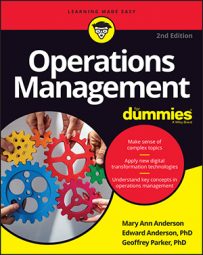Operations managers face a new challenge as a product matures. Its sales usually level off as the market becomes saturated. This saturation phase is usually a relatively calm period in which the demand, products, and competition are stable.
Despite the stability, this can be a challenging time for a company. Because the total market size is generally already determined, firms start looking for new ways to get a bigger slice of the existing pie by stealing market share from competitors.
The characteristics and operation strategies for a product in the saturation phase include steady customer demand, increasingly competitive pricing, and reducing costs and defects to gain market share.
Stay the course with steady demand
In the saturation phase, demand is fairly constant and predictable, and sales may be just to replace an existing product. The needs of the customer base are well known, and the rate of introduction of improvements decreases.
To increase sales in a market of constant size, you must find ways to increase market share at the expense of your competitors. You can accomplish this by continuing to reduce costs so you can reduce prices, focusing on ways to differentiate the product from the competition, and increasing marketing efforts.
Exploit predictable capacity
In the saturation phase, capacity is established, required levels are available, and reducing costs takes center stage. Production volumes peak during the saturation phase, and these volumes allow you to take advantage of economies of scale. The predictable sales also allow you to better utilize automation equipment and to schedule production.
Reduce your inventory
The stable demand and efficient production characteristics of the saturation phase enable you to better manage inventory. Variability in demand often requires you to hold larger quantities of inventory to meet surges in customer demand. Because this variability is reduced in the saturation phase, you can reduce inventory levels while maintaining customer service levels.
Stable demand also reduces the risks of not being able to sell inventory. This reduced risk associated with inventory may allow you to use inventory to reduce the needed peak capacity, resulting in reduced capacity costs.
Offer competitive pricing
Products often become commodities in the saturation phase, meaning that customers have many substitute choices. At this point, price becomes a competitive advantage. Faced with similar products with equal quality levels, a customer typically purchases the lowest-priced product, leading to decreasing prices.
To gain market share and possibly force competitors out of business, you may have to force pricing wars, offering aggressive pricing at or even below cost to eliminate competition with the hope of increasing prices as you corner the market.
One way to counteract this pricing pressure without putting yourself on the verge of bankruptcy is to continue to market and build a brand where your product is considered superior to the others. Doing so can prevent your product from becoming a commodity and can protect it from the increasing price pressure.
Balance a mature supply chain
By the time a product reaches the saturation phase, the supply chain should also be relatively mature. Chances are good that you’ve built solid relationships and that the supply chain runs smoothly. At this point, however, you may consider outsourcing some processes or even bringing some of the work back in-house to consolidate operations and maintain economies of scale, especially if demand could soon be in decline.
Gain market share over your competitors
By the saturation phase, the competitors are usually established, and competition is fierce. Gaining market share becomes critical, and because the market as a whole is saturated, the only way to gain market share is to “steal” sales from the competitors. During this phase, some competitors may transition out of the market or, in some cases, may buy operations from or sell operations to, or merge with, a former competitor.
Foresee the market’s decline
In the saturation phase, firms usually leave of their own volition as they see the decline of the market and the squeezing of profit margins. This may create a temporary advantage for those products remaining as they capture market share from those products exiting the market.
Perhaps the greatest cause of death in this phase is an inability to grow with the market. You may not have the capacity or the managing ability to keep up with the increasing demand. This results in lost sales because product isn’t available, disappointing potential customers and sending them into the welcoming arms of entering competitors.
In an effort to increase production, be careful not to lose your focus on quality. This can have devastating results if you’re trying to build a reputation in the market.

